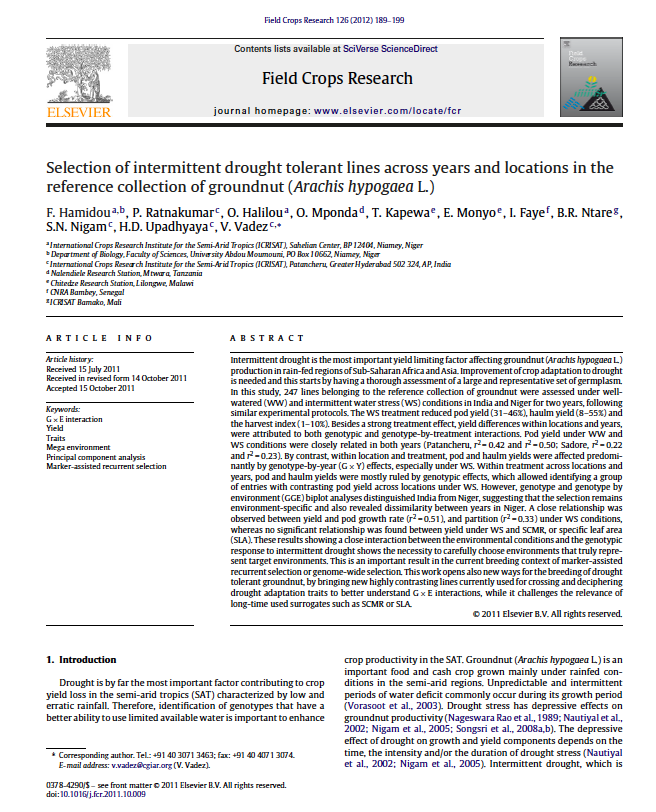Selection of intermittent drought tolerant lines across years and locations in the reference collection of groundnut
Summary
Intermittent drought is the most important yield limiting factor affecting groundnut (Arachis hypogaea L.) production in rain-fed regions of Sub-Saharan Africa and Asia. Improvement of crop adaptation to drought is needed, which is dependent on a thorough assessment of a large and representative set of germplasm. In this study, 247 lines belonging to the reference collection of groundnut were assessed under well-watered (WW) and intermittent water stress (WS) conditions in India and Niger for two years, following similar experimental protocols. The WS treatment reduced pod yields (by 31–46%), haulm yields (by 8–55%), and the harvest index (by 1–10%). Besides a strong treatment effect, yield differences within locations and years were attributed to both genotypic and genotype-by-treatment interactions. Pod yields under WW and WS conditions were closely related in both years (Patancheru, r2 = 0.42 and r2 = 0.50; Sadore, r2 = 0.22 and r2 = 0.23). In contrast, within location and treatment, pod and haulm yields were affected predominantly by genotype-by-year (G × Y) effects, especially under WS. Within treatment across locations and years, pod and haulm yields were mostly ruled by genotypic effects, which allowed identifying a group of entries with contrasting pod yield across locations under WS. However, genotype and genotype by environment (GGE) biplot analyses distinguished India from Niger, suggesting that the selection remains environment specific. Analysis also revealed a dissimilarity between years in Niger. A close relationship was observed between yield and pod growth rate (r2 = 0.51), and partition (r2 = 0.33) under WS conditions, whereas no significant relationship was found between yield under WS and SCMR, or specific leaf area (SLA). These results, showing a close interaction between the environmental conditions and the genotypic response to intermittent drought, suggests the need to carefully choose environments that truly represent target environments. This is an important result in the current breeding context of marker-assisted recurrent selection or genome-wide selection. This work also opens new ways for the breeding of drought-tolerant groundnut, by bringing new highly contrasting lines currently used for crossing and deciphering drought adaptation traits to better understand G × E interactions. It also challenges the relevance of long-used surrogates such as SCMR or SLA.
Open resource Download resource

